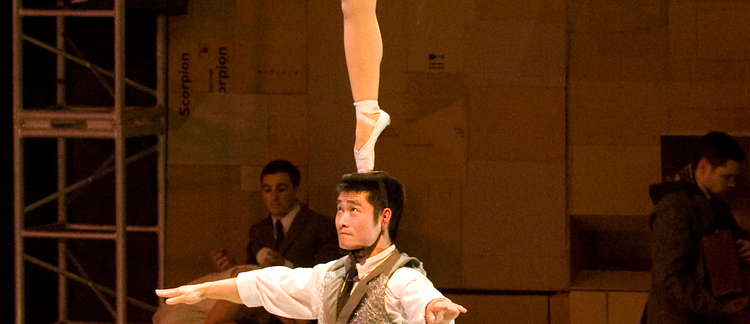In 1939, Ediciones Botas published the book Los payasos, poetas del pueblo (The Clown Poets of the People) by Armando de Maria y Campos. In 2018, researcher Sergio López Sánchez from the Rodolfo Usigli National Center for Research, Documentation and Theatre Information (CITRU) created a critical edition of this title. Reviewing this updated edition gives us the opportunity to delve into the original copy with new eyes. López’s annotated edition of the book takes us on a journey through the world of clowns in Mexico with scenes from the global history of circus led by De Maria y Campos, who had a career as a writer, journalist and theatre critic.
López’s corrected, expanded and annotated edition, published in 2018 by the Mexican Ministry of Culture (Secretaría de Cultura), the National Institute of Fine Arts and Literature (Instituto Nacional de Bellas Artes y Literatura) and the CITRU, provides supporting images, terminology and quotations that enrich the text and clarify the historical record. The seventeen chapters of the original book significantly benefit from this meticulous work. This supplemental material begins with new appendices, including a compilation of writings by Francisco Zarco, Ignacio Manuel Altamirano, Fernando Orozco y Berra, José Tomás de Cuéllar, Manuel Bonilla and Guillermo Prieto. These contributions are followed by a glossary of stage and circus terms, as well as a guide to key places in Mexico City that includes their respective twenty-first-century names.
It should be noted that many terms used in this work, particularly those from the nineteenth century, have become obsolete; consequently, performing arts jargon often needs clarification, and the glossary in this new edition explains various terms. Here are some examples: “A cócora is a person or group of people who are engaged in annoying the audience with shouting, whistling, kicking or any other means to try and interrupt the show”; “A machincuepa is the action of bringing your hands to hip height, sitting down and then doing a backflip onto your back”; “An antipodista is an artist who plays with a piece of wood that they spin with their feet while resting their back on the ground”; “A redondel is the canvas that surrounds the entire circus space or encircles the tent.”
López’s Key Places Guide takes us on a voyage through time. It contains detailed descriptions of theatres, rope courts, circuses, promenades, cafes, streets and squares. This situates us in the theatrical environment preceding 1900 and intertwines that geography with the current nomenclature of what is now called Mexico City.
Both De Maria y Campos and López highlight marginalized artists who—because they did not appear in hegemonic spaces—existed outside of the history of theatricality in Mexico. Despite this disadvantage, they built and strengthened national performing arts at a popular level.
The text highlights the circus and clowns of nineteenth-century Mexico, providing historical context from pre-Hispanic and colonial times up to the era of twentieth-century comedians like Charlie Chaplin and Mario “Cantinflas” Moreno. A special mention in this tour goes to the most famous nineteenth-century Mexican clown, José Soledad Aycardo. He is recognized as a pillar of circus arts during that period due to his wide-ranging professional practice as a poet, puppeteer, author, actor, director and impresario at the Teatro del Relox.
López’s 2018 annotated edition of Los payasos, poetas del pueblo is illustrated with photographs, maps, flyers, programs, postcards and illustrations of books and periodicals made available thanks to an exhaustive investigation into various public and private collections, which are listed at the end of the book. These documentary sources, which the original book did not contain, help to verify information in the historical record and increase our knowledge of fonts, lithography, characters, spaces and other contextual information. In particular, the transcription made from hand-written programs deserves to be highlighted. From these transcripts, we can learn, among other things, which strategies were used to attract spectators; for example, on some occasions, rhyming verses were included.
What do Armando de Maria y Campos and Sergio López Sánchez have in common besides this book? Their passion for collecting documents, their love for theatre and circus, and their generosity in sharing knowledge with the reading public. De Maria y Campos created this written history of circus and clowns in Mexico, and López has now taken up the torch of these same studies. Unlike his predecessor, who had to work in isolation, López is now in the company of other researchers who are making the subject of circus more visible. As these researchers collaborate and strengthen the foundations of circus studies in Mexico, they create new opportunities for future researchers.
Author Biography
Claudia Irán Jasso Apango is a librarian from the National Autonomous University of Mexico (UNAM). She holds an MA in philosophy and cultural criticism from Universidad Intercontinental. She is a documentation researcher and has worked at the Rodolfo Usigli National Theater Research, Documentation and Information Center (CITRU) since 2013, where she is responsible for preservation processes, cataloguing, user training and specialized consultation. She is also in charge of the Ludwik Margules and La Carpa archives in Mexico. Her areas of research are artistic documentation, theatrical documentation, gray literature, Mexican muralism and theatre. She has given conferences in Mexico, Argentina and Colombia and works as an adjunct professor for the MA Degree in Theater Research program at the Mexican National Institute of Fine Arts and Literature (INBAL).
